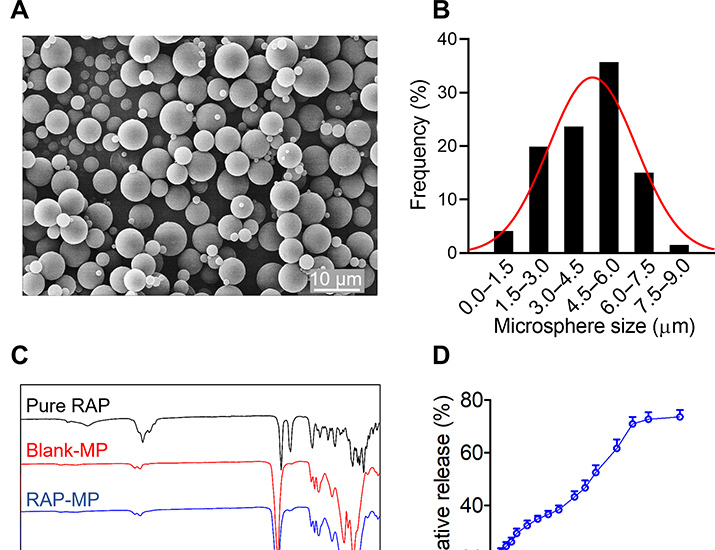Tiep Tien Nguyen:
ORCID: https://orcid.org/0000-0003-0377-1153
Role: ConceptualizationRole: Formal analysisRole: InvestigationRole: MethodologyRole:
ValidationRole: VisualizationRole: Writing - original draft
Duc-Vinh Pham:
ORCID: https://orcid.org/0000-0002-3098-3541
Role: Formal analysisRole: Investigation
Junhyeung Park: Role: Investigation
Cao Dai Phung:
ORCID: https://orcid.org/0000-0001-5771-2664
Role: InvestigationRole: Resources
Mahesh Raj Nepal: Role: Formal analysisRole: InvestigationRole: MethodologyRole: ResourcesRole: ValidationRole:
VisualizationRole: Writing - original draftRole: Writing - review & editing
Mahesh Pandit: Role: Investigation
Manju Shrestha:
ORCID: https://orcid.org/0000-0003-0757-5299
Role: Writing - review & editing
Youlim Son: Role: Formal analysisRole: Investigation
Mili Joshi:
ORCID: https://orcid.org/0000-0002-3853-7925
Role: Investigation
Tae Cheon Jeong:
ORCID: https://orcid.org/0000-0003-2025-6698
Role: ConceptualizationRole: InvestigationRole: Resources
Pil-Hoon Park:
ORCID: https://orcid.org/0000-0002-4057-1313
Role: ConceptualizationRole: Formal analysisRole: ValidationRole: Writing - review
& editing
Dong-Young Choi:
ORCID: https://orcid.org/0000-0001-6937-6135
Role: MethodologyRole: ResourcesRole: Validation
Jae-Hoon Chang:
ORCID: https://orcid.org/0000-0002-1001-6570
Role: Formal analysisRole: MethodologyRole: SoftwareRole: Writing - review & editing
Ju-Hyun Kim:
ORCID: https://orcid.org/0000-0002-6555-9716
Role: Writing - review & editing
Jae-Ryong Kim: Role: Methodology
Il-Kug Kim:
ORCID: https://orcid.org/0000-0002-2428-8403
Role: MethodologyRole: Validation
Chul Soon Yong: Role: Resources
Jong Oh Kim:
ORCID: https://orcid.org/0000-0002-4929-851X
Role: SupervisionRole: Writing - review & editing
Jong-Hyuk Sung: Role: ResourcesRole: Writing - review & editing
Hu-Lin Jiang:
ORCID: https://orcid.org/0000-0002-1620-1777
Role: Writing - review & editing
Hyung-Sik Kim:
ORCID: https://orcid.org/0000-0002-7588-7393
Role: ConceptualizationRole: Formal analysisRole: Funding acquisitionRole: InvestigationRole:
ResourcesRole: Validation
Simmyung Yook:
ORCID: https://orcid.org/0000-0003-2129-1890
Role: ConceptualizationRole: Funding acquisitionRole: InvestigationRole: MethodologyRole:
Project administrationRole: ResourcesRole: SupervisionRole: ValidationRole: VisualizationRole:
Writing - original draftRole: Writing - review & editing
Jee-Heon Jeong:
ORCID: https://orcid.org/0000-0002-7120-169X
Role: ConceptualizationRole: Funding acquisitionRole: InvestigationRole: MethodologyRole:
Project administrationRole: ResourcesRole: SupervisionRole: VisualizationRole: Writing
- original draftRole: Writing - review & editing
Journal ID (nlm-ta): Sci Adv
Journal ID (iso-abbrev): Sci Adv
Journal ID (publisher-id): sciadv
Journal ID (hwp): advances
Title:
Science Advances
Publisher:
American Association for the Advancement of Science
ISSN
(Electronic):
2375-2548
Publication date Collection:
August
2022
Publication date
(Electronic, pub):
24
August
2022
Volume: 8
Issue: 34
Electronic Location Identifier: eabn8614
Affiliations
[
1
]College of Pharmacy, Yeungnam University, Gyeongsan, Gyeongbuk, 38541, Republic of
Korea.
[
2
]College of Pharmacy, Keimyung University, Daegu, 42601, Republic of Korea.
[
3
]College of Medicine, Yeungnam University, Daegu, 42415, Republic of Korea.
[
4
]College of Pharmacy, Yonsei Institute of Pharmaceutical Sciences, Yonsei University,
Incheon, 21983, Republic of Korea.
[
5
]Epibiotech Co. Ltd., Incheon, 21983, Republic of Korea.
[
6
]State Key Laboratory of Natural Medicines, China Pharmaceutical University, Nanjing,
210009, China.
[
7
]Jiangsu Key Laboratory of Druggability of Biopharmaceuticals, China Pharmaceutical
University, Nanjing, 210009, China.
[
8
]Jiangsu Key Laboratory of Drug Discovery for Metabolic Diseases, China Pharmaceutical
University, Nanjing, 210009, China.
[
9
]NMPA Key Laboratory for Research and Evaluation of Pharmaceutical Preparations and
Excipients, China Pharmaceutical University, Nanjing, 210009, China.
[
10
]Department of Life Science in Dentistry, School of Dentistry, Pusan National University,
Yangsan, 50612, Republic of Korea.
[
11
]Dental and Life Science Institute, Pusan National University, Yangsan, 50612, Republic
of Korea.
[
12
]Department of Precision Medicine, School of Medicine, Sungkyunkwan University, Suwon,
16419, Republic of Korea.
Author notes
Author information
Article
Publisher ID:
abn8614
DOI: 10.1126/sciadv.abn8614
PMC ID: 9401619
PubMed ID: 36001671
SO-VID: 5938d1eb-dffa-46ff-8a44-9d1785cd3f4e
Copyright © Copyright © 2022 The Authors, some rights reserved; exclusive licensee American Association
for the Advancement of Science. No claim to original U.S. Government Works. Distributed
under a Creative Commons Attribution NonCommercial License 4.0 (CC BY-NC).
License:
This is an open-access article distributed under the terms of the
Creative Commons Attribution-NonCommercial license, which permits use, distribution, and reproduction in any medium, so long as the
resultant use is
not for commercial advantage and provided the original work is properly cited.
Funded by:
Cooperative Research Program for Agriculture Science and Technology Development, Rural
Development Administration, Republic of Korea;
Award ID: PJ015596
Funded by:
National Research Foundation of Korea (NRF), Ministry of Science and ICT., Republic
of Korea;
Award ID: 2020R1C1C1004733
Funded by:
National Research Foundation of Korea (NRF), Ministry of Science and ICT., Republic
of Korea;
Award ID: 2021K1A3A1A20002609
Subject:
Research Article
Subject:
Biomedicine and Life Sciences
Subject:
SciAdv r-articles
Subject:
Immunology
Subject:
Research Methods
Subject:
Immunology

